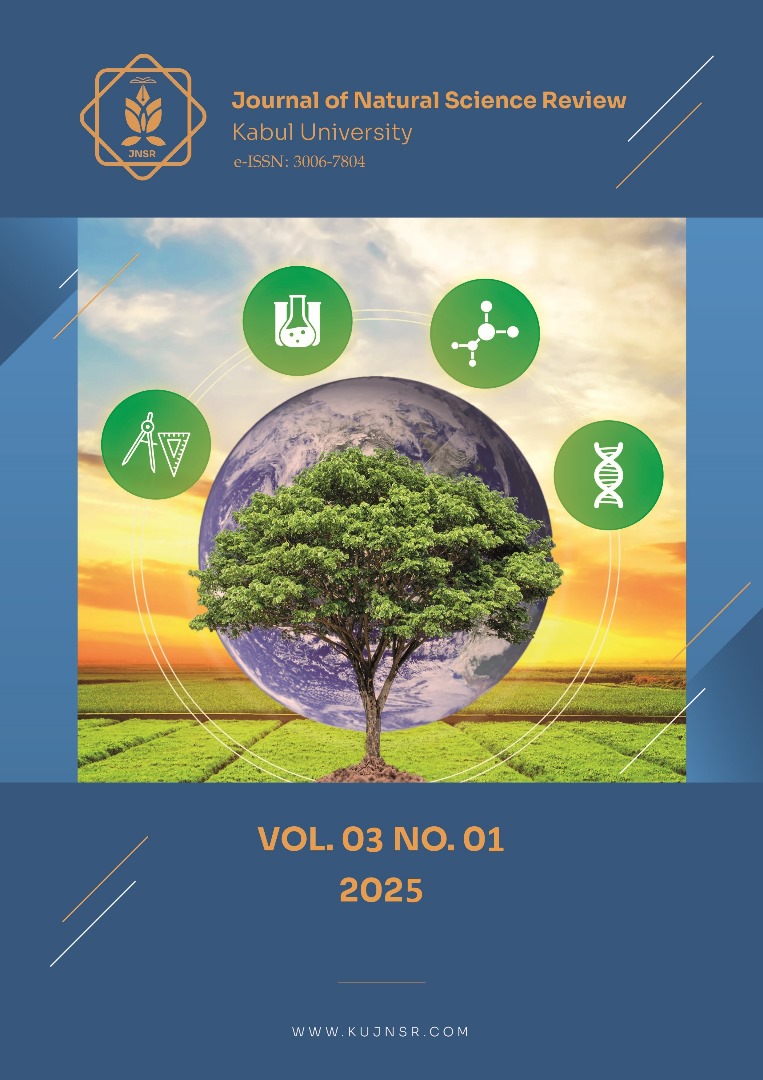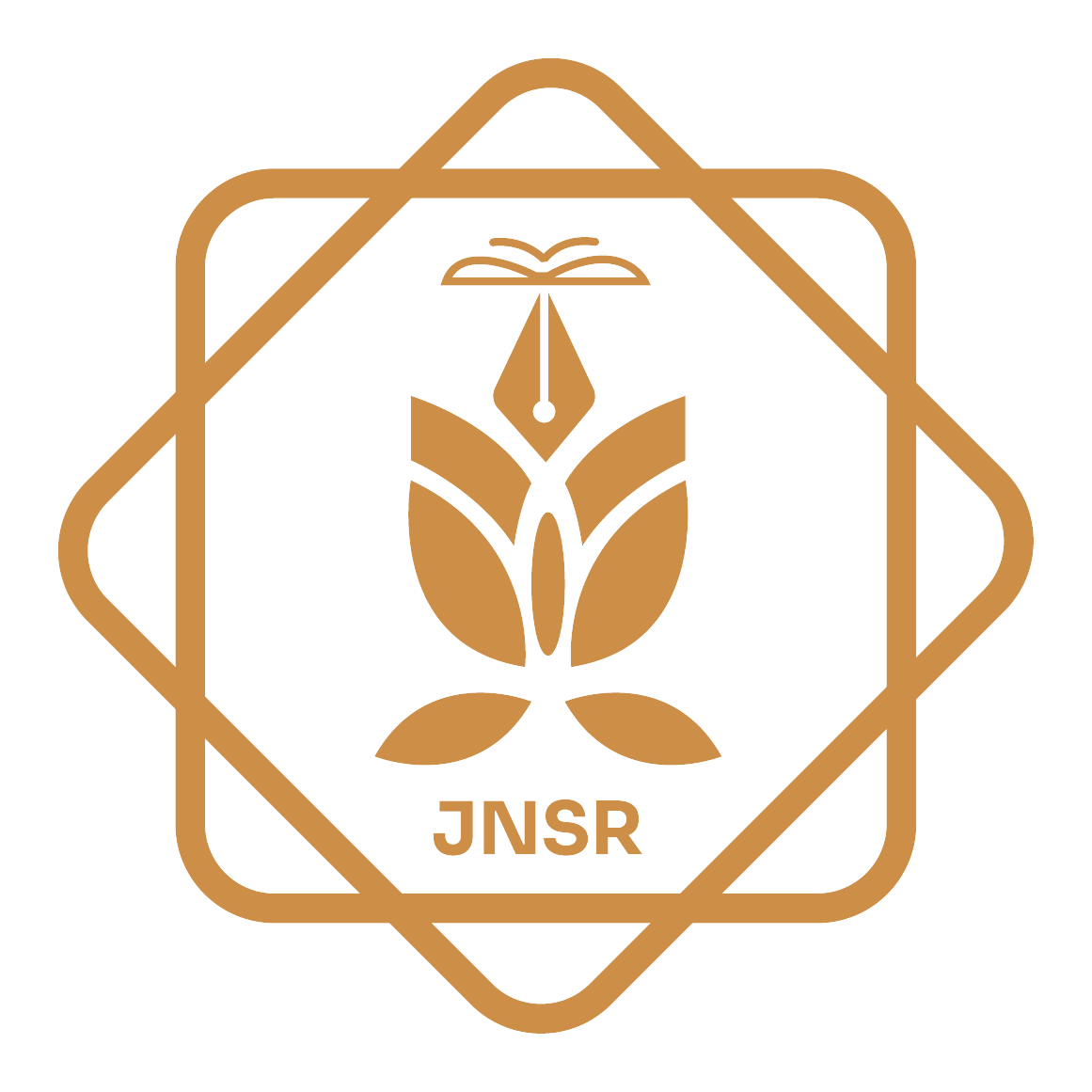Influence of Taxation Policy on the Employment of Production Factors in Agriculture Sector Using a CGE Modelling Approach
DOI:
https://doi.org/10.62810/jnsr.v3i1.186Keywords:
Capital Share, Indirect Labor Share, SAM, TaxAbstract
This study investigates the impact of indirect taxation on employment in Afghanistan's agriculture sector, addressing the lack of research on its short-term macroeconomic effects, particularly in agricultural sub-sectors. To fill this gap, a general equilibrium model integrated with a social accounting matrix was used to quantify employment responses across ten scenarios, testing 20%, 40%, 60%, 80%, and 100% changes in the 2018 indirect tax volume. The findings reveal a direct correlation between indirect taxes and labor and capital employment, where tax reductions led to a decline in employment across all agricultural categories. In contrast, tax increases had the opposite effect. Forestry contributed the most to employment growth under rising tax scenarios, followed by opium, vegetables, cereals, fruits, and livestock. The study highlights the need for alternative job opportunities and effective tax revenue management to mitigate labor market disruptions and support sustainable agricultural development.
Downloads
References
Alphonsus, S., & Anichebe, A. (2020). Effect of tax policy on unemployment in Nigeria. Research Journal of Finance and Accounting, 10(12). https://doi.org/10.7176/RJFA/10-12-13
Bargain, O., Orsini, K., & Peichl, A. (2014). Comparing labor supply elasticities in Europe and the US. Journal of Human Resources, 49(3), 723–838. RePEc:uwp:jhriss:v:49:y:2014:iii:1:p:723-838
Chidinma, C., & Anokwuru, G. (2022). Fiscal policy and employment generation in Nigeria. European Journal of Economic and Financial Research, 2(6). http://dx.doi.org/10.46827/ejefr.v6i2.1282
Chioma, G., Ubaka, O. F., & Bidemi, O. (2020). Indirect tax and employment generation in Nigeria. Asian Business Research Journal, 5, 7–12. https://doi.org/10.20448/journal.518.2020.5.7.12
Eduardo, L., & Fajardo, J. (2012). Employment and taxes in Latin America: An empirical study of the effects of payroll, corporate income and value-added taxes on labor outcomes. Inter-American Development Bank. https://doi.org/10.18235/0011414
Farajzadeh, Z., & Nazari, M. (2023). Consequences of agricultural tax. Journal of Tax Research, 58(109), 49–76. https://doi.org/10.61186/taxjournal.32.58.2
Hagedorn, M., Mariovskii, I., & Stetsenko, S. (2015). Taxation and unemployment in models with heterogeneous workers. Institute for Empirical Research, 1–61. https://www.sas.upenn.edu/~manovski/papers/Taxation_Unemployment.pdf
Jauhar, S., Banuree, S. A. H., & Naseri, A. K. (2024). The obstacles faced by Afghanistan traders in exporting agricultural products. Journal of Natural Science Review, 2(Special Issue), 300–315. https://doi.org/10.62810/jnsr.v2iSpecial.Issue.146
Johnson, A. A. (2013). Tax policy, inflation and unemployment in Nigeria. European Journal of Business Management, 5(15), 114–129. https://www.iiste.org/Journals/index.php/EJBM/article/view/6212
Kafaei, M. A., & Miri, N. (2011). The estimation of armington elasticity of substitution for Selected Goods. Iranian Journal of Economic Research, 11(3), 27–45. http://ecor.modares.ac.ir/article-18-9944-fa.html
Karimi, S. M., & Dorbash, M. (2018). The study on the effect of direct and indirect taxes on income distribution using the generalized method of moments. Financial and Economic Policy Quarterly, 6(22), 47–68. https://qjfep.ir/article-1-607-en.html
Khodabakhsi, A., & Rostaee, S. (2022). Modeling the effect of indirect taxes on welfare of income deciles in Iran using computable general equilibrium model. Economic Modeling, 3(59), 33–50. https://www.sid.ir/paper/1061698/en
Lofgren, H., Lee, H., R., & Robinson, S. (2002). A standard computable general equilibrium (CGE) model in GAMS (Vol.5). https://www.un.org/en/development/desa/policy/mdg_workshops/training_material/lofgren_lee_and_robinson_2002.pdf
Latif, L. (2023). Checking in on tax: The evolution of checkpoint taxation in Afghanistan. https://dx.doi.org/10.2139/ssrn.4519136
Meyer, B. D., & Rosenbaum, D. T. (2001). Welfare, the earned income tax credit, and the labor supply. The Quarterly Journal of Economics, 116(3), 1063–1114. https://www.jstor.org/stable/2696426
Ministry of Finance. (2019). Afghanistan revenue department. https://ard.gov.af/?s=english&c=tax-laws
Mousavi, S., Shaygani, B., & Farajzadeh, Z. (2012). The impact of taxes on agricultural activities. Agricultural Economics Research, 4(4), 63–96. https://www.sid.ir/fa/VEWSSID/J_pdf/36313911604.pdf
Naseri, A. K., Ahamdzai, K. M., & Honaryar, G. (2024). Performance of agriculture export commodities from Afghanistan to world. Journal of Natural Science Review, 2(Special Issue), 486–490. https://doi.org/10.62810/jnsr.v2iSpecial.Issue.148
Nmesirionye, J. A., Jones, E., & Onuche, E. V. S. (2019). Impact of indirect taxes on economic performance of Nigeria (1994–2017). European Journal of Accounting, Finance and Investment, 5(4), 32–39. https://www.academia.edu/43356331/IMPACT_OF_INDIRECT_TAXES_ON_ECONOMIC_PERFORMANCE_OF_NIGERIA_1994_2017
Obayori, J. B., & Omekwe, S. O. (2019). Indirect tax and economic growth in Nigeria: The case of VAT. International Journal of Science and Management Studies, 2(6), 61–66. https://doi.org/10.51386/25815946/ijsms-v2i6p107
Putzel, J. (2010). Why development actors need a better definition of state fragility. https://www.lse.ac.uk/international-development/Assets/Documents/PDFs/csrc-policy-briefs/Why-Development-Actors-need-a-Better-Definiation-of-State-Fragility.pdf
Sahebe, A., Baheej, M., Khalazie, M., & Chukwuma, O. J. (2020). Impact of tax laws and system on Afghanistan economy. American International Journal of Business Management, 3(5), 52–61. https://www.researchgate.net/publication/341266848_Imact_of_Tax_Laws_and_System_on_Afghanistan_Economy
Special Inspector General for Afghanistan Reconstruction (SIGAR). (2024). Afghan business taxes: action has been taken to address most tax issues, but the afghan government continues to assess taxes on exempt U.S.-funded contracts. https://www.sigar.mil/Reports/Article-Display/Article/4008408/afghan-business-taxes-action-has-been-taken-to-address-most-tax-issues-but-the/
World Bank. (2019). The World Bank in Afghanistan: Overview. https://www.worldbank.org/en/country/afghanistan/overview
World Bank. (2023). Afghanistan economic monitor: 31 October 2023. https://thedocs.worldbank.org/en/doc/2ab75317f6e86c9bb6fcf342f72e0b64-0310012023/original/Afghanistan-Economic-Monitor-31-October-2023.pdf
Downloads
Published
How to Cite
Issue
Section
License
Copyright (c) 2025 Ayaz Khan Naseri , Naser Shahnoushi, Arash Dourandish

This work is licensed under a Creative Commons Attribution-NonCommercial 4.0 International License.



























